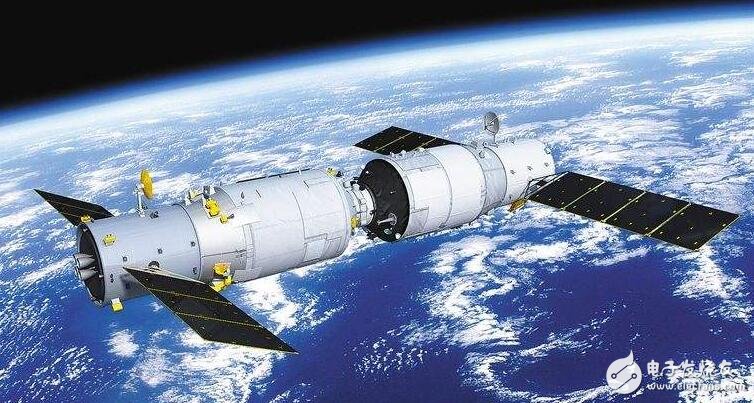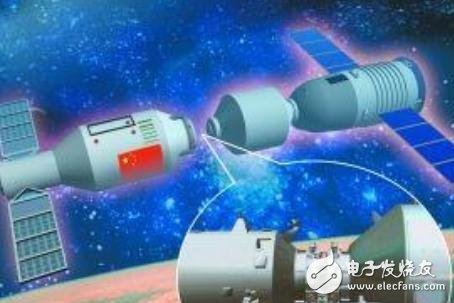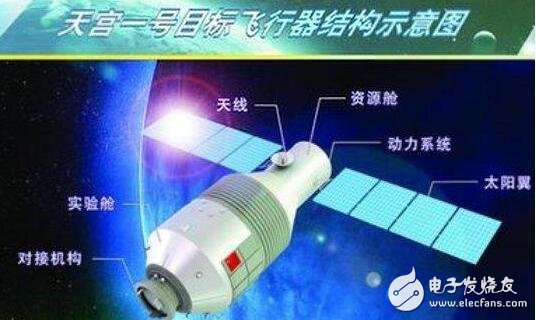No matter what is aerospace, everyone is highly concerned, so the launch of the Tianzhou-1 is naturally the focus of everyone's attention. The Tiantan No. 1 attempted the self-destruction mode for the first time and achieved a good success. China’s breakthrough in space waste disposal is really something that everyone deserves. Then the specific process follows the small series to understand.

At around 18:00 on September 22, after the Tianzhou-1 cargo spacecraft completed various scheduled tasks in the space laboratory stage, it was controlled to derail into the atmosphere and fell into the South Pacific Ocean. The Tianzhou-1 spacecraft is not only the first cargo ship in China, but also the first attempt to reduce space debris by controlled off-track in China. The controlled demolition and burning is also conducive to reducing the damage of spacecraft wrecks to the ground. China's spacecraft also bid farewell to this. "Flying in a disaster."
We Chinese people have a lot of imaginations about the sky, both the beauty of the story of the Cowherd and the Weaver Girl, and the darkness of the people who are worried about the sky. With the advent of the space age, it is not a joke to worry about people, and it is a fact that flying into a disaster. Since the Sputnik 1 satellite in 1957, the Earth's orbit has been filled with large and small space junk, which is mainly composed of the final rocket and satellite spacecraft. For small space junk, it will be completely burned when entering the atmosphere. The hazards of the space experts are only headaches. However, for large space junk, even the high speed of the track reentry does not necessarily burn out, and the remaining debris fragments fall to the ground, which is really innocent to the people on the ground.

Definitely enthusiastic readers said: I have not heard of anyone who was killed by satellite debris. In fact, this is not surprising. 70% of the surface of the earth is ocean, and the land is actually sparsely populated. Even in densely populated areas, the density of 100 people per square kilometer is very high, and the densely populated urban areas The proportion of land area is very small. The total amount of space debris in Earth's orbit is not too large. It can pass through the atmosphere and is subjected to high temperature and high pressure tests to reach the ground. In general, they are not a real threat to humans on the ground. Although there are still no shipwrecks that have caused deaths, the uncontrolled reentry of such a large sky laboratory is still daunting.
However, the sword of Damocles hung on the head is always uncomfortable. In 1979, the Space Laboratory of the US Space Station was uncontrolled and burned. The remaining debris was distributed in the vast South Indian Ocean to the west of Australia. Fortunately, no one is killed or injured. With the advancement of technology, the space powers such as the United States and the Soviet Union have carried out experiments on the controlled fall of spacecraft and normalized. The controlled fall areas are generally selected in the South Pacific. There are only sporadic islands scattered in the middle of the vast ocean. The debris of the debris will not be harmful.
The Soviet Union began to use the Progressive spacecraft to replenish and replenish the space station from the Salute Route 6. The Progressive spacecraft was subsequently controlled to be destroyed and burned. The Mir space station, which was prominent in the Russian era, was also controlled on March 23, 2001. Falling into the South Pacific burned. The controlled slumping of large spacecraft in the United States was a matter of the era of the International Space Station. The main reason was that the Cygnus cargo ship was actively destroyed and burned. In addition, the European ATV and the Japanese HTV cargo ship also actively burned down after completing the replenishment mission. China's 921 manned spaceflight project has steadily advanced, and the space station stage is already in sight. Controlled slumping and burning of large spacecraft, reducing orbital debris and reducing the damage of debris to the ground are also on the agenda.

Tianzhou No.1 is not a pioneer of controlled degeneration. When China launched the Tiangong-1 target aircraft in 2011, it clearly stated that it would be controlled to re-enter the atmosphere and complete the South Pacific Ocean after completing its mission. Regrettably, there are unexpected events. On March 1, 2016, the Tiangong-1 aircraft was still in good condition. On March 21, the manned space engineering office suddenly announced that the Tiangong-1 aircraft had failed. After the post-production report speculated that Tiangong No. 1 suddenly failed completely, the entire aircraft also lost control and telemetry signals, and controlled re-entry could not be discussed. It could only be controlled by the late Tiangong 2 and Tianzhou No. 1 bearers. Test task. After completing the flight plan and expanding the test mission of the space laboratory stage, Tianzhou No. 1 became the pioneer of the controlled depreciation test in China.
The controlled destructive destruction mission is not technically difficult, mainly because of the precise orbital control technology, so that the controlled reentry degraded area is far away from the smoked area, thus minimizing the possible danger to the ground population. Since the implementation of China's manned spaceflight project, the Shenzhou spacecraft has launched and returned 11 ships, accumulating rich experience in attitude and orbit control. The precise controlled reentry of the spacecraft has long been a problem for China. In short, the controlled re-entry and burn-out technology of Tianzhou-1 is not difficult, but from the perspective of aerospace and safety, it is still a milestone in the development of China's manned space flight.

Whether it is to evade, defend, slow down or recycle, it is impossible to fundamentally eliminate space junk. The sky's space junk will eventually be thoroughly cleaned up, and it is imperative to develop space garbage disposal technology.
In fact, many countries are launching plans to clean up space junk, and scientists are considering selecting cost-effective solutions from countless waste disposal programs. NASA is considering laser cleaning of space debris around the Earth to prevent it from colliding with satellites. The principle of laser-clearing space debris is that the photons in the laser beam carry a small amount of power, which can propel and decelerate objects in space under certain circumstances. After a few hours of emitting laser light to the debris, it is possible to change its direction. Even if you can't get space debris out of orbit, you can avoid hitting space stations or satellites. The equipment cost of the new project is only $800,000, and the total cost is only $10 million. The existing telescope has been improved and can be put into use, reducing operating costs. Some scientists believe that a large laser station should be built on the top of Hawaii. Others believe that lasers are installed on satellites to smash debris into the atmosphere.
Japan Aerospace Research and Development Agency has decided to launch a garbage cleanup test since 2014 to remove space debris consisting of satellites and rocket wrecks that have reached the end of their useful lives. The way to clean up is to tie the space debris floating in the space with a metal rope, then reduce it and let it fall into the atmosphere to destroy it. In addition, Japan will develop a "cleaning satellite" and launch it around 2019. At that time, the "cleaning satellite" will use the equipped camera to find and access space debris, and then use the robot arm to install the metal rope. A dedicated satellite with several metal ropes and multiple space debris can be launched around 2023.
British scientists have designed and developed a nano-scale satellite called the "Cubic Sail", which weighs about 3 kilograms and is about 30 centimeters in length & TImes; 10 centimeters, using solar solar sails as a propulsion system, once the camera on the sail Reconnaissance of space junk, attached to the garbage, to reduce its speed, and finally into the atmosphere, with the same as space junk.

Portable high efficient travel charger, can charge multi devices at the same time, every port output mini 5v 1a, max 5v 2.1a. We can meet your specific requirement of the products, like label design. The plug type is US/UK/AU/EU. The material of this product is PC+ABS. All condition of our product is 100% brand new.
Our products built with input/output overvoltage protection, input/output overcurrent protection, over temperature protection, over power protection and short circuit protection. You can send more details of this product, so that we can offer best service to you!
Usb Charger,Universal Travel Adapter,Intelligent Usb Charger,Travel Adapter
Shenzhen Waweis Technology Co., Ltd. , https://www.huaweishiadapter.com
